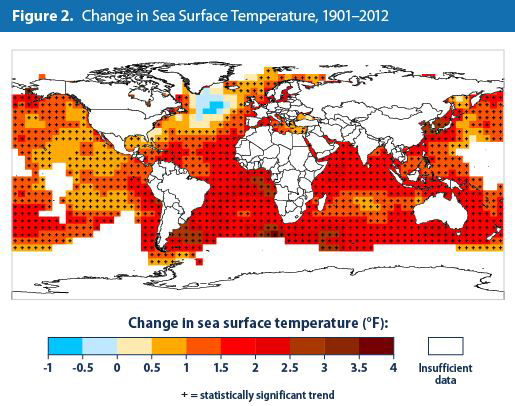The following is a ThinkProgress.org Climate Progress report written by Emily Atkin and posted on March 13, 2015 with the title above:
Dr. Andrew Trites has been studying marine mammals in the North Pacific for 30 years, and he’s never seen anything like what’s happening in California. “This will probably be the highest number of stranded sea lion pups on record,” he told ThinkProgress on Friday. “The last three years have been particularly high, and it looks as though that this year, 2015, will the highest ever recorded.”
More than 1,450 baby sea lions have washed up on California beaches this year, a huge number that’s been putting animal rescue centers in a frenzy. The phenomenon has been reported widely, but was particularly magnified in a Thursday New York Times story that delved into specifics about the animals’ plight.
“Many are sick with pneumonia, their throaty barks muted to rasping coughs,” the story, written by Times correspondent Jack Healy, reads. “Parasites have swarmed their digestive systems. Some are so tired that they cannot scamper away when rescuers approach them with nets and towels and heft them into large pet carriers.”
Why is this happening? The Times story cites a rapidly changing environment driven by “unusually warm waters,” which are driving away food sources for sea lion moms. Because the moms can’t find food, they’re either abandoning the pups, or not getting back to them in time to feed them.
Trites, for the most part, agrees with that assessment. When you get warm ocean surface waters that replace cool nutrient rich waters, animals do starve,” said Trites, the director of the Marine Mammal Unit at the University of British Columbia’s Fisheries Centre. That’s because the fish sea lions like to eat — anchovies and sardines, to name a few — tend to prefer cool, nutrient-rich water. If the surface waters are warm, the anchovies swim deeper, making it harder for sea lions to dive and find them. “Unfortunately, the young animals pay the price,” Trites said. “If the food is short, mothers can prove enough to keep themselves going, but can’t eat enough to produce the extra energy to make milk.”
It is certainly true that sea surface temperatures have been on the rise in the last hundred years. In fact, more than 90 percent of human-caused warming goes into the oceans, while only 2 percent goes into the atmosphere. Those increases have manifested in sea surface temperatures, as the U.N. Intergovernmental Panel on Climate Change graphic at right shows.
The rising sea surface temperatures themselves aren’t the only side effect of human-caused climate change that could be contributing to these unusual sea lion strandings. Increased extreme weather events driven by a weaker jet stream could also be increasing the likelihood of warm ocean waters, Trites said. That’s because during storms, wind drags on the ocean surface, pulling together and concentrating large bodies of warm water together.
That, however, is just a theory. It would be difficult to prove that this particular stranding was the result of a climate-driven weather event. But still, Trites said, it’s suspicious. “Weather patterns have an element of randomness, but what’s so clear is that we’re seeing more extreme storms,” he said, noting the risk of concentrated warm waters is increasing with climate change. “This could well be that, just like a homeowner is dealing with [increased risk] on a daily basis, sea lions and other marine life also have to deal with that as well.”
Trites said more research is needed to figure out exactly what’s causing the strandings. In the meantime, people need to figure out their own responsibilities to the struggling animals. Do they save them? Or do we sit by and let nature take charge? Trites, himself, isn’t sure. “No one likes to see any animal suffer,” he said. “But it’s quite a predicament. This may well be just the start.”
Editor’s note: Many thanks to alumnus Jeffrey A. Onsted (PhD 2007) for suggesting this material. Jeff is currently an Associate Professor of Geography in the Department of Earth & Environment and the Department of Global and Sociocultural Studies at Florida International University.



